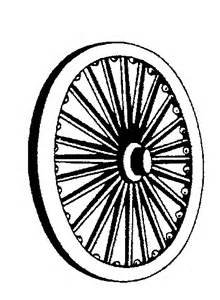Most people say: “oooo ten days! That is too much, I couldn´t bear it.” I did not think that way before I went on my first ten day Vipassana retreat and after having been introduced to Dhamma I think that anybody would not only finish the retreat, but enjoy it and introduce the meditation practices in their daily life.
To meditate in Vipassana is a very simple action that anybody has at hand. One should just sit down in a quiet place and observe the sensations in their body, pleasant or un pleasant, that arise and pass over time (annicca). The purpose of this is to acquire panna, the wisdom or insight (the law of nature and the universe) that purifies the mind. The point is that in Dhamma, the way to liberation, there are three main learnings:
- Sila: morality
- Samadhi: mastery over the mind
- Panna: wisdom, learn the law of nature
Most religions focus on teaching Sila. What should one do to live a joyful life away from misery? Religions give us an answer that different enlightened people gave us. Some, such as Buddhism, do also help one master their mind; but no religion teaches a technique that helps us to experience the law of nature, reality as it is, and thus, it becomes extremely complicated to integrate what we rationally find acceptable in Sila into our daily life. By developing Panna one experiences the law of nature, and those learnings get rooted at the deepest levels of the mind, the unconscious level.
A human being is composed of the five elements above. The physical matter follows the law of nature; the perception throw our six senses (5 + mind or emotions) gives way to sensations that we evaluate and make us decide to react in one way or another. However, we already know how we should act, that´s why we have Sila and hence, it doesn´t seem very intelligent to let ourselves react according to the previous process because we might not act according to Sila.
The aim of Vipassana meditation is to break the link between sensation and reaction at the unconscious level. In this way, whatever happens around us and whatever we perceive and sense we will act according to Sila. Whenever we fail to do this and we react in response to sensations, we generate craving and aversion, which are among the main causes of a life full of misery and suffering.

Leaving theories aside, I believe that Vipasanxs is a technique that everybody should, at least, try, It has definitely no counterindication and it is universal, absolutely anybody can make use of it.
My personal experience in Dhamma Neru was great. During the first days, I realised how crazy I am. My conscious goal was to focus on my respiration, but my mind was continuously jumping from thought to thought with no recognisable pattern, and I couldn´t stop it!
Things improved mindwise because my focus turned onto the physical painful sensation in my legs and back. I had the challenge and the goal of sitting for one hour without moving and that was what I thought of for some days. Once I achieved that, my focus turned onto the bodily sensations. I craved for pleasant sensations and today is the day when I have not felt those sensations throughout my whole body yet.On the other hand, I have developed the skills to remain equanimous towards unpleasant sensations. Indeed, I spent some days focusing on them and waiting for them to disappear (anicca). That prevented me from following the indications we were given but I was a great learning: it is not useful to create your own Vipassana technique. However, either naturally or synthetically staring at unpleasant sensations gave me great insights, in the form of pulsing images, into some things I should improve in my life: fear to insects, darkness, my relationship with my mother, fear to death or the need to open up and get to know new ideas and people.
The retreat was a very funny experience, I laughed a lot. At the beginning the garden full of thoughtful men made me laugh. Thinking about my fellow meditators and their characteristics and behaviours was also fun. Goenka, the teacher, was fun a swell. With a strong Indian scent, his stories were entertaining and his chantings were hilarious. And finally, I developed the habit to smile whenever something went wrong: I got distracted.
All in all, it is a technique I´m going to give a try to. During the retreat, there were days when I was fuly convinced of its benefits, some other days I felt discouraged and lost faith, but again thanks to my distractions, experiments and Goenka´s discourses I came up to realise that the point is no to agree with the theoretical explanation, nor to miss Vipassana with other techniques. The point is to fix to “the rules”, use the technique as it has been thought to e and not even expect anything, just let things unfold ad happen as they should.
100% recommendable
